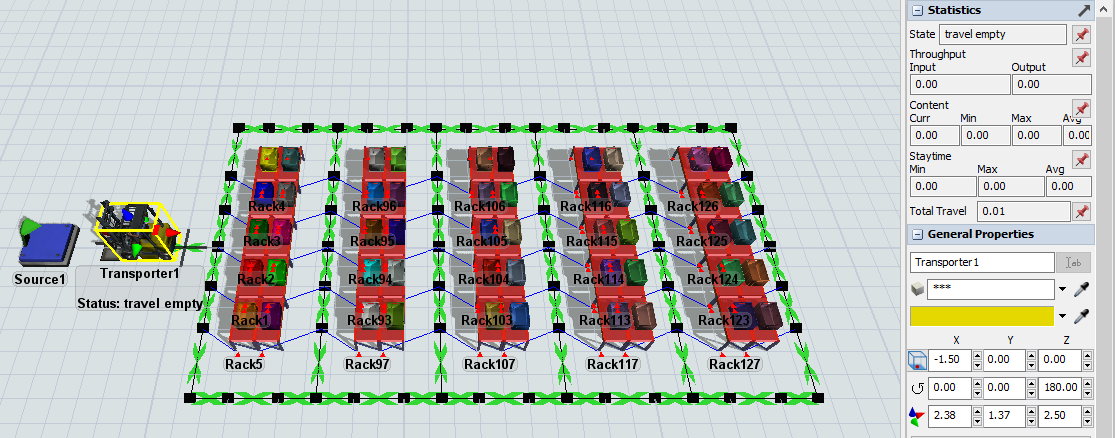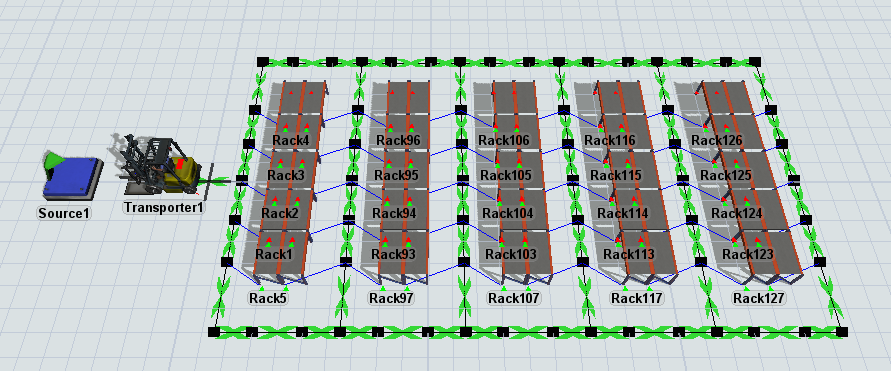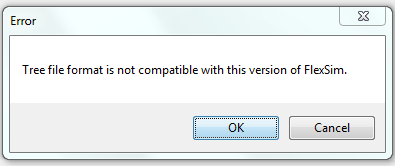I have a warehouse model that contains: Source(produces 50 different items in racks), Queue, 50 racks, Transporter and NetworkNodes path for the Transporter. At the beginning of the simulation run, the 50 items are placed on the 50 racks as shown in the figure below.

Then transporter take each item from racks and deliver them to Queue2(considered as a door for the warehouse) to make the warehouse empty, as shown in the figure below.

After that I have made two copies from this model, and each model have applied some changes on it to reach a specific objective.
The first model called: Task Sequence. Its description: There is a sequence of tasks in global table called "Sequence". Each row refers to the task that contains a sequence of items, while each column refers to the item in each task. Ex: first row contains: 50, 36, 46 and second row: 18,19. This means that transporter will take item 50 then item 36 and finally item 46 and deliver them to Queue2. Then will take item 18 then item 19 and deliver it to queue2, till all rows(tasks) are finished.
The second model called: Weighted Items. In this model, Transporter maximum weight to lift is 15 kg. In Source1, there is a label built called "Weight" to identify the mass of each itemType.
I wanted to apply both objectives in one model; to make task sequence and at the same time in limited weight for transporter. For example, we have two sequence of tasks: 50, 36, 46 in Row1(as shown in task sequence model in sequence global table) and their weights = 7,3,9 respectively. Then 18,19 in Row2 and their weights = 4,9 respectively.
In task of Row1, the transporter will lift items: 50 and 36 then deliver them to queue2, then will take item 46 and deliver it to Queue2 then(As the total mass of the three items will exceed the maximum weight the transporter can lift).
And in second task: will take both items 18 and 19 in one round, as the weight of them both = 13kg which is less than 15kg.

